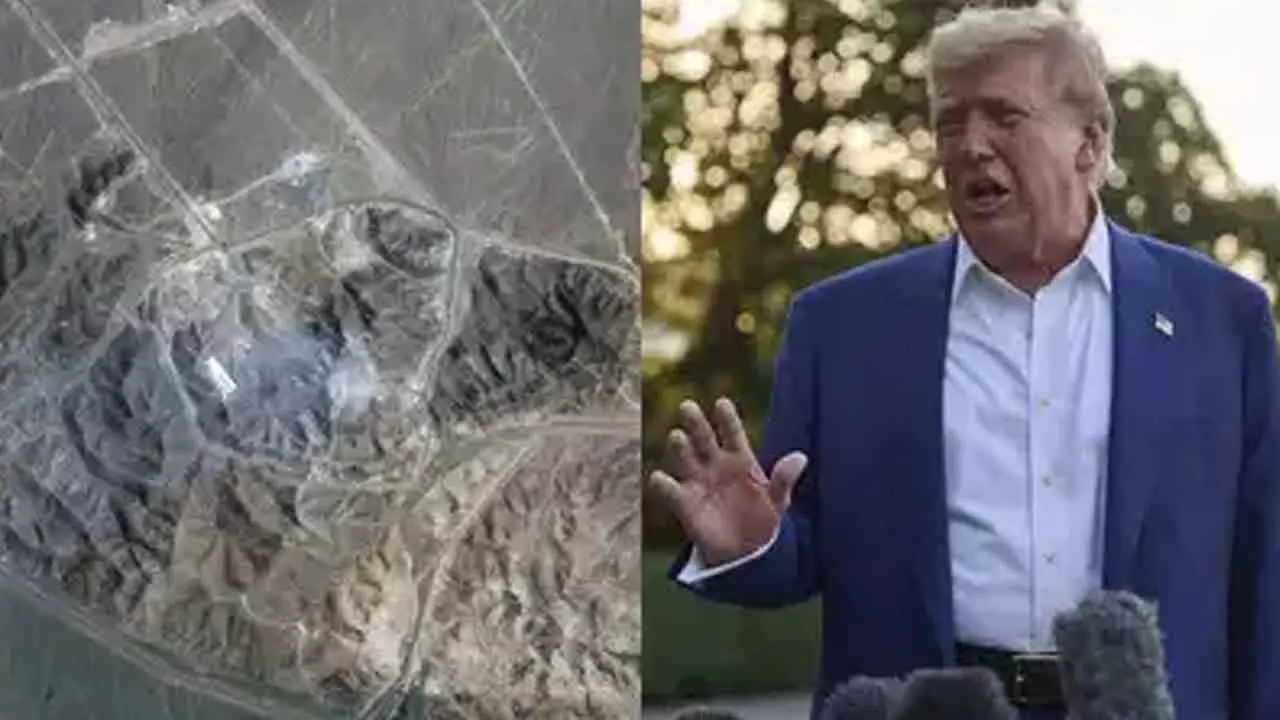"Operation Midnight Hammer" Under Scrutiny: US Intelligence Challenges Trump's Claims on Iran Nuclear Program
A new classified US intelligence report disputes President Trump's assertion that recent airstrikes "obliterated" Iran's nuclear program. The Defense Intelligence Agency (DIA) assesses Iran's enrichment capabilities could be restored within months, raising questions about the true impact of "Operation Midnight Hammer" amidst a fragile ceasefire.
"Operation Midnight Hammer" Under Scrutiny: US Intelligence Challenges Trump's Claims on Iran Nuclear Program

Early intelligence assessments from the United States are casting significant doubt on President Donald Trump’s emphatic claims that recent American airstrikes, dubbed "Operation Midnight Hammer," had "completely and totally obliterated" Iran’s nuclear program. A classified report by the Defense Intelligence Agency (DIA) suggests a far less definitive outcome, indicating that while damage was sustained, Iran's core enrichment capabilities could be back online within months.
According to the DIA's findings, which have been corroborated by multiple officials familiar with the assessment, key Iranian enrichment facilities at Fordo, Natanz, and Isfahan were indeed damaged. However, the report contends that these sites were not destroyed and could be restored within a matter of months. This directly contradicts President Trump's strong televised pronouncements following the strikes, where he declared a complete and total obliteration of Iran's nuclear infrastructure.
The intelligence paints a picture of "significant damage" but highlights that Iran's centrifuges largely remain intact. Crucially, a substantial portion of its highly enriched uranium stockpile was likely moved in anticipation of the attacks. For instance, the deeply fortified underground facilities at Fordo, despite being targeted by 30,000-pound bunker-buster bombs, were not penetrated. While tunnel entrances collapsed, the subterranean centrifuge halls themselves remained largely untouched.
White House Rejects Report as "Flat-Out Wrong"
The White House has vehemently denied the DIA's assessment. Press Secretary Karoline Leavitt dismissed the findings as "flat-out wrong," accusing the leaks of being a deliberate attempt to "discredit the brave fighter pilots" and undermine President Trump's leadership. "Everyone knows what happens when you drop fourteen 30,000-pound bombs perfectly on their targets: total obliteration," Leavitt asserted. President Trump himself took to social media, unequivocally stating that "THE NUCLEAR SITES IN IRAN ARE COMPLETELY DESTROYED!"
However, intelligence sources suggest that Iran may have anticipated the strikes. Satellite imagery from Maxar Technologies, dated June 19th – just three days before the U.S. assault – revealed bulldozers and trucks near Fordo, actively sealing tunnel entrances with dirt. Experts like Eric Brewer, a former U.S. intelligence analyst, believe Iran may have utilized these vehicles to relocate enriched uranium and possibly even centrifuges out of the potential strike zones. Kelsey Davenport from the Arms Control Association further warned that Iran could now pursue a covert enrichment facility, though such a move would carry substantial risks.
Vice President JD Vance, defending the military operation, argued that merely depriving Iran of the immediate ability to enrich to weapons-grade uranium constitutes a sufficient military objective. He maintained that achieving this goal, even if Iran retains stockpiles of 60% enriched material, signifies "mission success."
While Iran steadfastly maintains that its nuclear program is for peaceful purposes, prior to the strikes, it was believed to possess over 400 kilograms of 60% enriched uranium – enough, if further enriched, to produce several nuclear bombs. Iran recently confirmed the construction of a third enrichment facility in Isfahan, the status of which remains unclear following the joint Israeli and U.S. bombardments.
A Fragile Ceasefire Holds Amidst Accusations
The ceasefire brokered by the U.S. is currently holding, albeit precariously. This comes despite accusations from Israel that Iran violated the truce by firing missiles – a claim Tehran vehemently denies. President Trump, expressing palpable frustration, publicly blamed both sides for escalating tensions, remarking that they had "fought so long and so hard they don’t know what they’re doing."
Reports indicate that in a post-strike phone call, President Trump informed Israeli Prime Minister Benjamin Netanyahu that no further American military operations would follow, strongly urging a diplomatic resolution instead. Netanyahu later announced that Israel had achieved its objectives, expressing gratitude to Trump for his role in neutralizing the perceived nuclear threat.
However, independent experts remain cautious, warning that Iran still possesses enough infrastructure and materials to potentially reconstitute a covert nuclear program. While such an endeavor would now face heightened scrutiny and logistical hurdles, the debate over the true effectiveness of "Operation Midnight Hammer" and the future trajectory of Iran’s nuclear ambitions is far from over as the dust begins to settle.

